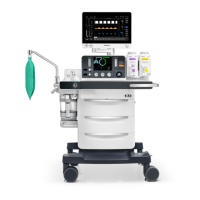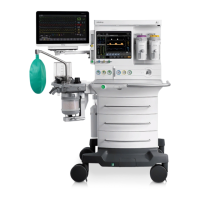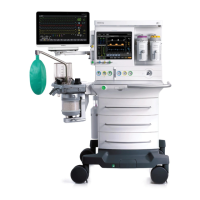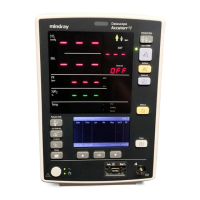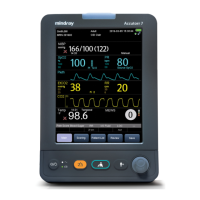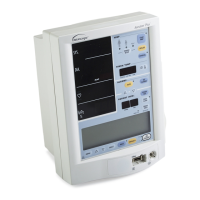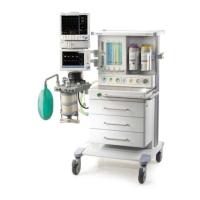Maintenance
7 - 2 046-004667-00 A7™ Operating Instructions
WARNING: Do not use a malfunctioning A7 Anesthesia System. Have all repairs and
service done by an authorized service representative.
WARNING: Use a cleaning and disinfection schedule that conforms to your
institution's disinfection and risk-management policies.
• Refer to the material safety data sheet as applicable.
• Refer to the operation and maintenance manuals of all
disinfection equipment.
• Do not inhale fumes that may result from any disinfection process.
WARNING: Do not use talc, zinc stearate, calcium carbonate, corn starch, or similar
material to prevent sticking of the bellows, as these materials may
enter the patient's lungs or airway, causing irritation or injury.
WARNING: Only use lubricants approved for anesthesia or O
2
equipment.
WARNING: Do not use lubricants that contain oil or grease. They can burn or
explode in the presence of high O
2
concentrations.
WARNING: Obey infection control and safety procedures. Utilized equipment may
contain blood and body fluids.
WARNING: Movable parts and removable components may present a pinch or a
crush hazard. Use care when moving or replacing system parts and
components.
WARNING: Before using the A7 System (after cleaning or disinfecting), power up
the system and follow the on-screen prompts to perform the leak test
and the compliance test. See section 4.5 (page 4-8) "Leak and
Compliance Tests".
CAUTION: To prevent system damage:
• Refer to the literature supplied by the manufacturer of the
cleaning agent.
• Never use organic, halogenated or petroleum-based solvents,
anesthetics, glass cleaning agents, acetone or other irritant
agents.
• Never use abrasive agents (i.e. steel wool or silver polish) to clean
components.
• Keep all liquids away from electronic components.
• Prevent liquid from entering the equipment.
• All cleaning solutions used must have a pH between 7.0 and 10.5.
CAUTION: Do not autoclave the following components: Paw gauge, flow sensor,
and bellows. These components cannot withstand immersion or the
heat and pressure of autoclaving.
NOTE: No repair should ever be attempted by anyone not having experience
in the repair of devices of this nature. Replace damaged parts with
components manufactured or sold by Mindray. Then test the unit to
ensure that it complies with the manufacturer’s published
specifications.
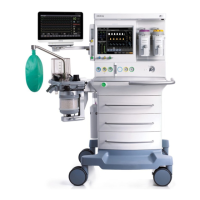
